Knidos: More Than Just a Peninsula of Science, Art, and Architecture
We are here with the ancient city of Knidos, which attracts visitors with its natural beauty and historical structure. It is such a city that has developed itself in every subject and attracted attention. We are exploring this ancient city that still preserves its charm. We are ready if you are ready!
About Knidos
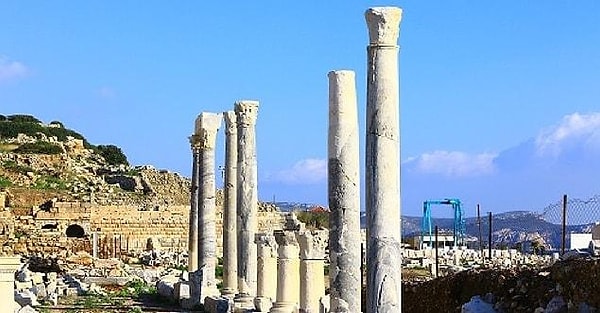
The ancient city of Knidos, located on the Tekir Cape where the Aegean and Mediterranean Sea meet at the very tip of the Reşadiye Peninsula in Datça District of Muğla Province, is one of the most important centers of coastal cities. Knidos is one of the five Dorian cities of Herodotus. It is an ancient settlement from the Kayra period (the name of the Mugla region in ancient times).
The city of Knidos was structured according to Hippodamos' 'grid plan'. The city is intersected by four parallel wide streets in the east-west direction and one perpendicular street in the north-south direction. In accordance with the condition of the land, the streets and alleys sometimes intersect each other in the form of stairs and sometimes perpendicularly.
Importance of Knidos in Science and Art

Knidos was a city at a very advanced level in science, architecture and art compared to that period. Eudoxus, who is considered to be the great astronomy and mathematics scientist of history, the famous doctor Euryphon, the famous painter Polygnotos and Sostratos, the architect of the Lighthouse of Alexandria, considered one of the seven wonders of the world, lived in Knidos.
Doctor Euryphon and his students founded the second largest medical school of their time in Knidos. The famous scientist Eudoxus developed the sundial, which is the great invention of the period, and you can still see it today in the ruins.
Eudoxus of Knidos was also working on mathematics, astronomy and physics. In the most famous observatory of the period, Eudoxus was studying the stars.( The bright, cloudless sky of the Datça peninsula may have had an effect)
Knidos was also famous for its grapes and was one of the important centers exporting wine. It was said that Knidos wine had a digestive property. Its reputation spread so much that the wine was sent from the Eastern Mediterranean to the Black Sea and Athens.
The Story of Knidos Aphrodite Statue

The short story of the Knidos Aphrodite statue is as follows; The city of Kos, one of the six Doric cities, asked the famous sculptor Praxiteles for an Aphrodite statue. Praxiteles makes two sculptures, one of which is naked and the other has a folded fabric on it. Kos chooses the statue with folded fabric, the naked one is left to Knidos
For the first time in that period, a woman's body was sculpted so boldly. The statue is so eye-catching that people from many places come to Knidos to see the statue, the ships passing through here do not pass without stopping at Knidos. Knowing that marble is a sculpting material that gives the closest texture of the human body, the sculptor used the most beautiful marble suitable for this work. With the legendary beauty of the statue, Praksiteles was even thought to give the stone a soul.
Historical Places to Visit in Knidos Ancient City
Knidos Round Temple
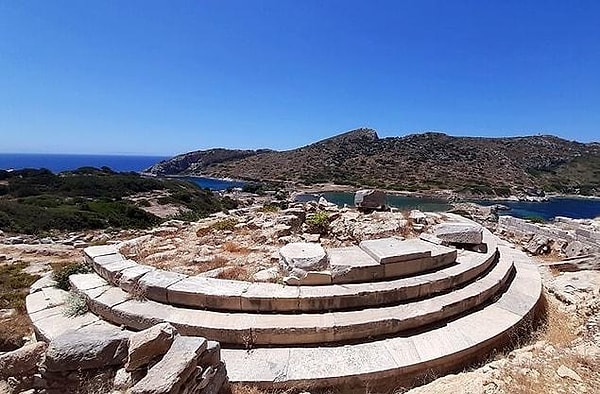
The entrance of the round temple (Tholos) is made of gray marble and the superstructure is made of soft poros stone. The entrance with stairs and the altar are on the east side. The temple is surrounded by round cella columns and the superstructure is carried by Corinthian capitals. Today's ruins are known to date from the 2nd century BC. The small buildings to the west and east, of which only the foundations remain, are presumed to be treasure chambers. The long easternmost building is thought to have been used for religious ceremonies or banquets.
Adress: Yazı, 48900 Datça/Muğla
Knidos Apollo Temple
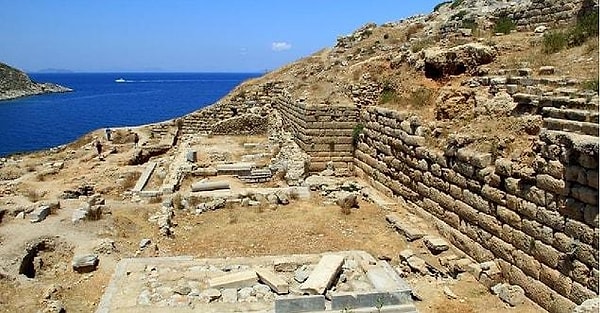
It is estimated that the temple and altar were built in the 2nd century. In the temple, sacred ceremonies were organized by finding the statue of the holy god and burning incense accompanied by various hymns. The altar was built mostly for sacrifices and gifts offered to the gods. The writings that can be read say that 'the altar was dedicated to Apollo Karneios and the carving works were done by Theon of Antioch and Zenodototos of Knidos'.
Knidos Corinthian Temple
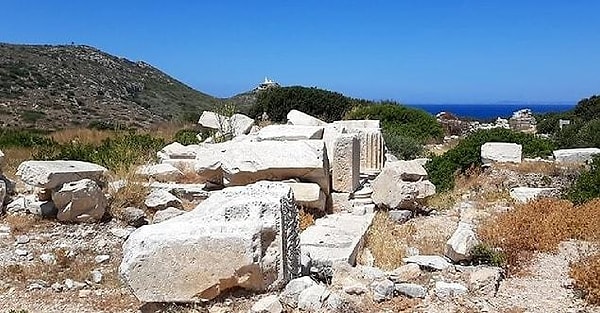
It is a temple located on a hill overlooking the whole city and can be reached by seven steps. The shield relief on the front is remarkable. It is estimated that this temple was built in the 2nd century AD during the time of the Roman Emperor Hadriyanus.
Knidos Deveboynu Lighthouse
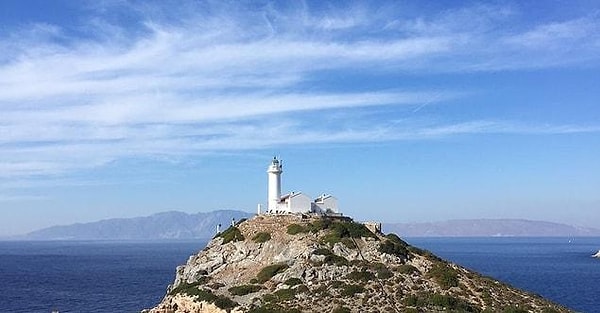
The lighthouse was built in 1931 in the Knidos (Kriyo) region of Datça, which is the most extreme point of Anatolia extending to the Mediterranean Sea. The lighthouse is also a point separating the Aegean and the Mediterranean. Since the location of the lighthouse resembles the neck of a camel, the lighthouse was named Deveboynu. The height of this lighthouse is 104 meters above sea level and the tower height is 9 meters.
Knidos Dionysos Temple

Dionysus temple in the ancient city, which is thought to have a total of four in the city, is located in an area close to the coast. It is estimated that it was built for Dionysus as there are reliefs and images of Dionysus, the god of wine, on its friezes.
Knidos Doric Staoa - Church B
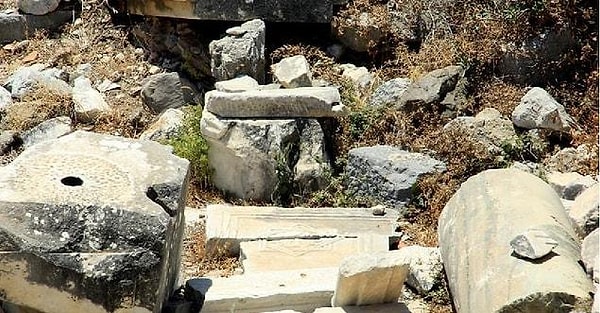
In Knidos, Stroa was built on the lower terrace where the Temple of Dionysos and the small theater were located. It is thought that some of these spaces were used as churches for religious rituals. The lower part of the 7.5-meter-high structure is made of rectangular gray-blue hard limestones, topped with light sandstone blocks. The structure was first built during the Hellenistic Period and a columned gallery was added in the 2nd century.
Boulakrates Fountain
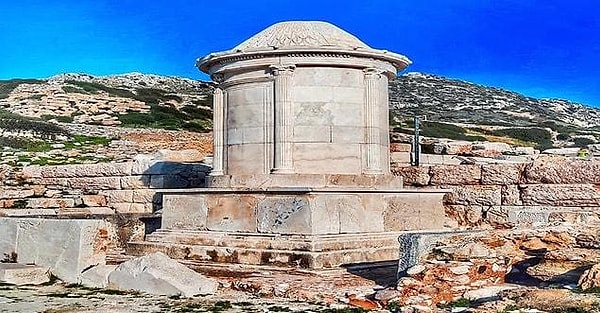
There is a three-line inscription on all the blocks of the fountain in the ancient city of Knidos. The inscription means 'The fountain was dedicated to the public by Boulakrates, the supervising officer (epimeletes) in charge of water works'.
Where is Ancient City of Knidos ?
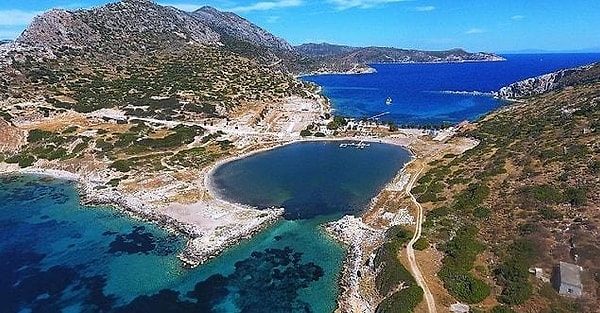
Adress: Yazı, Muğla Datça Çevre Yolu, 48900 Marmaris/Datça/Muğla
Opening-Closing Time: 09:00-20:00
How to get to Ancient City of Knidos?

You can choose airline, private car or bus to come to Muğla. There are shuttles to come to Datça. You can go to Knidos from Datça by minibus and sea taxi.
If you say that you do not want to go by minibus but by sightseeing, the best way to go to Knidos is to rent a car. On your journey on the Marmaris-Datça road, when you come to the Datça turnoff, the road splits into two and you need to turn to the road following the Knidos sign. If you follow the road to the far end of the peninsula, you will reach Knidos.
Keşfet ile ziyaret ettiğin tüm kategorileri tek akışta gör!


Send Comment